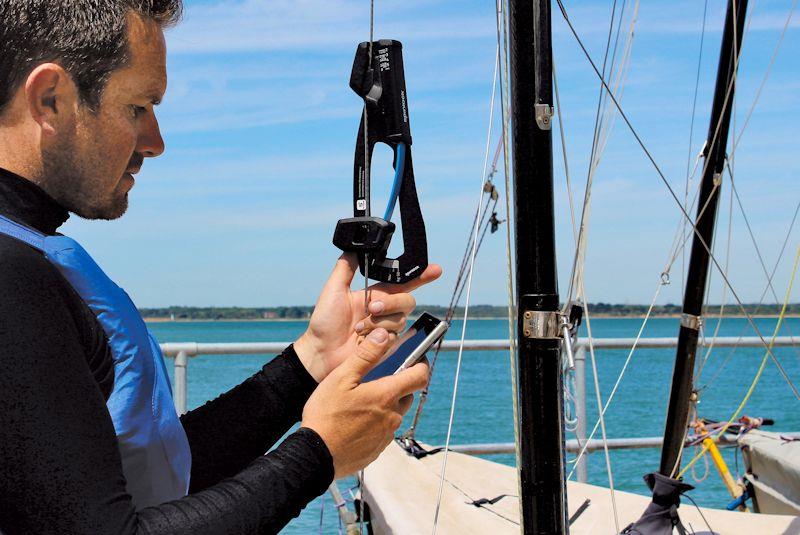
The Spinlock RIG-SENSE : Find your optimum rig tension and keep it
by Aleix Escorsell 12 Jan 2023 09:00 UTC

Rig-Sense is a compact rig tension device © Spinlock
The Spinlock Rig-Sense is a compact rig tension device designed to measure the loads in wire or rope on small keelboats and dinghies. Many boat owners may not be aware of just how critically important rig tension is for efficiency and fast sailing. If the rig is not tensioned properly, the sails have no hope of setting correctly.
Even for cruising sailors, who aren't as focused on speed, tensioning your rig correctly means less heel, less leeway, better pointing, less tacking, a lighter helm and ultimately, a more enjoyable and relaxed sailing experience.
Therefore, it's important to find the rig tension 'sweet spot' early on, not just for calm days, but for all wind conditions. Once you've found the perfect tension, it's all about being able to replicate it quickly and accurately so you're ready to sail no matter the wind conditions.
That's where the Rig-Sense comes in to play. With the Rig-Sense you can measure and replicate the ideal rig conditions at a glance, and the companion App is the ideal place to store all your rig data in easy to read tables.
How does it work?
To attach the Rig-Sense to your rigging, first press in the top lever and engage the unit on to the rig. Check the wire diameter gauge, as shown in the image above, to ensure the unit is sitting on the wire correctly.
You can then attach the composite leaf spring using the lower wheel hook as seen in the image above. Then press the back plate until the reading shows zero to reset the leaf spring, then let go of the unit completely.
Once you let go, the Rig-Sense will settle on the correct wire tension, accurate to +/- 5%. This can be seen by the small black arrow on the unit, the example shows a reading of 81kgs.
Spinlock recommends that you mark the location on the wire / shroud with a pencil or piece of tape so that you can always measure the tension in the same place. It's also recommended that you attach the rig sense at eye level to make it easy to read the results.
As you can no doubt tell, it is very simple and intuitive to operate the Rig-Sense, but Spinlock have created a short video to show you exactly how the Rig-Sense connects to your rig and how to accurately take measurements from the device, we have included it here:
Storing the results
The Rig-Sense Tuning App was designed as a companion to the Rig-Sense and a place to store data collected by the device. It's a handy place to store all your rig data, including the date and time, wind range and of course the tension for different rig setups.
The app has a number of default templates to get you started, ranging from beginner to advanced, but you are also completely free to add and delete fields so that you can tailor the data in the app to your own boat. The app also features useful tables to convert your data from KGs to pounds (lbs) and vice versa if required.
This data can also be exported via email or Dropbox so you can store and view all your data on other devices.
Conclusion
So, for sailors looking for an easy and reliable way to store and replicate their rig tension under various wind conditions, the Spinlock Rig-Sense with companion app is an elegant and reliable solution.
The Rig-Sense is available in two sizes for 2-5mm and 5-8mm diameter wire/cables. All Rig-Sense rig tension gauges come with a storage bag.
If you have any questions about the Spinlock Rig-Sense, please feel free to email us at , or click the link below to see the range:
